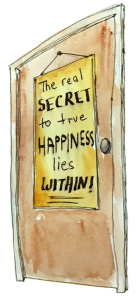Do you want to create a ceremony that clearly reflects your unique values, beliefs, and life circumstances? Do you know how or what is required? A good place to begin is to check out any requirements that the state has where the ceremony will take place. Most states want you to speak your vows in front of at least one witness who then signs the license, to meet the requirements for marriage in that state, and to have a qualified officiant. Beyond that, if there is no religious authority involved, you start with a blank sheet of paper. Don’t worry – I’m going to make this easy and fun for you! Just follow these steps.
Step One: Make sure you are both onboard to personalize your ceremony.
Remember there are two of you involved and the ceremony should be the best match for the two of you possible.
Step Two: Decide to have fun with this process.
Even though this is probably the first wedding ceremony you have ever designed, it is a wonderful opportunity to create a celebration of your union in rituals and words that will create beautiful memories to carry forward with you. Remember that this is your wedding and while family members and friends may have strong opinions about your ceremony – you two are ultimately in charge of deciding what is just right for you.
Step Three: Separately answer the following questions in writing and then share your responses with each other.
The best ceremonies truly reflect both spouses – so don’t let your partner cop out and say whatever you want is fine. Here are the questions:
- What is important to you about the tone, content, and duration of your ceremony?
- What, if any, specific ceremonial elements do you want to include or exclude from your ceremony?
- Are there any spiritual, religious, or heritage traditions or elements that are important to you to include on your own behalf or that of your family?
- Are you open to writing and saying your own vow provided any concerns you have are satisfactorily addressed?
- Is there anyone, living or dead, who will not be present at your ceremony who you would like to mention or in some way pay tribute to in the ceremony?
- Who, if anyone would you like to do a reading? Any particular text?
- Is there anything else that you know you want to include, exclude, or avoid in your ceremony?
Step Four: Consider the following guidelines:
- Trying too hard to be unique can easily result in a ceremony that is cliché or offensive to some of your guests. Here are two examples:
- You might want to have butterflies released during your recessional. However, a couple I married did this and when the guests opened their cardboard containers, half the butterflies were dead.
- One groom decided to surprise his bride by serenading her during the ceremony with his heavy metal band. This mini jam session left many traditional guests horrified.
- You need to find an experienced officiant who is on the same page with you and is resourceful, helpful, and supportive of your wishes to customize your ceremony. Remember, most ceremonial texts are spoken predominantly by the officiant. Use your officiant as a resource and agree to a timetable for drafting and editing your ceremony for the spoken word – in other words, always read it out load to decide how it will sound. Keep your officiant in the loop – no surprises. Remember they are the expert.
- A great ceremony strikes a balance between personal expression and tradition. Be careful not to throw away all the elements of tradition. For example, the traditional sequence of ceremonial elements provides a logical sequence of events that allow the ceremony to reach a crescendo with the sharing of vows, the ring exchange, final blessing and pronouncement, and the kiss. I recommend that you put your signature on the content of the elements you choose to include rather than in their sequencing.
Step Five: Do your research.
There are wonderful books and websites available to give you great ideas of what works, what doesn’t, and how other couples have successfully customized their ceremonies. Of course, I simply must tell you that my book, The Wedding Ceremony Planner: The Essential Guide to the Most Important Part of Your Wedding Day is actually the bestselling book on wedding ceremony design for both clergy and couples. If you choose to use it, I hope it’s a wonderful resource for you.
Step Six: Keep it short and simple.
You can create a beautiful and memorable ceremony that takes no more than 15-20 minutes. In my experience, a ceremony that goes much longer runs the risk of creating fidgety, bored, and impatient guests. For example, you may lose the attention of your guests by including more than two readings.
Step Seven: At your ceremony – breathe, relax, keep your sense of humor, and be present in your loving.
No matter how carefully you plan your ceremony – there will be surprises. When the ceremony begins, all you really need to do is to look into the eyes of your beloved, breathe deeply, and feel the joy in your heart. What a magnificent moment in life and what a shame to miss it because you are worrying about some detail or find yourself overcome with nerves. The greatest gift you can give yourself and each other is to be fully present in the loving that brought you both to this moment. You can only focus your attention on one thing at a time. So, let it be the joy, loving, and gratitude you feel to be joining together I marriage, rather than worrying about whether or not the caterer got your message about the olives. Just breathe, smile, and feel the loving.






